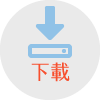簡易檢索 / 詳目顯示
| 研究生: |
夏堃皓 Kun-Hao Hsia |
|---|---|
| 論文名稱: |
臺灣鋰電池製造產業競爭分析-以M公司為例 Competitive Analysis of the Lithium Battery Manufacturing Industry in Taiwan: A Case Study of M Company |
| 指導教授: |
張順教
Shun-Chiao Chang |
| 口試委員: |
黃美慈
彭素玲 |
| 學位類別: |
碩士 Master |
| 系所名稱: |
管理學院 - 管理研究所 Graduate Institute of Management |
| 論文出版年: | 2024 |
| 畢業學年度: | 112 |
| 語文別: | 中文 |
| 論文頁數: | 64 |
| 中文關鍵詞: | 鋰電池 、儲能設備 、電力供應 、產業鏈 、電動移動載具 |
| 外文關鍵詞: | Lithium-ion battery, Energy storage system, Electricity supply, Industry chain, Electric vehicles |
| 相關次數: | 點閱:591 下載:14 |
| 分享至: |
| 查詢本校圖書館目錄 查詢臺灣博碩士論文知識加值系統 勘誤回報 |
電力在國家經濟發展和日常生活中都扮演了很重要的角色。然而,因應用電需求演進,並應對碳排放、氣候變遷及能源短缺的各項議題,跟隨著再生能源發展,也讓用電相關應用發展多元,不論是在生活中的產品使用習慣變化,而促使鋰電池廣泛使用於各產業中,如儲能設備、電動移動載具(電動車、電動腳踏車、電動垂直起降飛行器(eVTOL)、個人移動式物品(筆電、手機)等。個案公司為臺灣少數還活耀於全球鋰電池製造的公司,透過母公司的垂直整合策略佈局新能源儲能系統的未來發展,並在各特殊領域中亦有傑出功績來跟進全球未來趨勢。
本研究先以Porter五力模型,分析個案公司布局於鋰電池全球產業鏈,規劃其未來發展趨勢。並透過SWOT 來分析個案公司製造鋰電池的優劣勢、機會威脅等,再延展合縱個案公司的優劣勢、機會威脅來透析有效的TOWS矩陣策略。最後使用BCG動態分析投入之應用產業對於個案公司的表現來做有效的公司資源平衡分配。
個案公司擁有其於鋰電池製造領域長年累積的商譽及鋰電池產品性能及品質口碑,在全球激烈的市場競爭下,本研究提出競爭力五項核心建議: 1.加深儲能產業垂直合作;2.特殊領域持續耕耘;3.環境永續綠能發展;4.智能化生產,製程持續優化;5.佈局新領域產業導入。
Electricity plays a crucial role in both national economic development and daily life. However, with the evolution of electricity demand and the need to address issues such as carbon emissions, climate change, and energy shortages, the development of renewable energy has led to diverse applications of electricity. This has resulted in changes in consumer habits and the widespread use of lithium-ion batteries in various industries, including energy storage devices, electric vehicles (EVs), electric bicycles, eVTOLs (electric Vertical Take-Off and Landing aircraft), and personal mobile devices (laptops, smartphones).
The case is one of the few active global players in lithium-ion battery manufacturing in Taiwan. Through its parent company's vertical integration strategy, it positions itself for the future development of new energy sources and has achieved outstanding performance in various specialized areas, aligning with global trends.
This study begins by analyzing the case's positioning in the global lithium-ion battery industry chain using Porter's Five Forces model, planning its future development trends. SWOT analysis is then employed to assess the strengths, weaknesses, opportunities, and threats related to lithium-ion battery manufacturing. The study further extends the analysis to identify effective TOWS matrix strategies based on the company's strengths, weaknesses, opportunities, and threats. Finally, dynamic analysis using the BCG matrix is utilized to allocate company resources effectively based on the performance of the industries into which the company invests.
The case has garnered a strong reputation and positive product performance in the lithium-ion battery manufacturing sector. In the highly competitive global market, this study proposes five core recommendations to enhance competitiveness: 1. Deepen vertical cooperation in the energy storage industry; 2. Continue cultivation in specialized areas; 3. Develop environmentally sustainable green energy; 4. Implement intelligence in production with continuous process optimization; 5. Expand into emerging industries for the new generation.
參考文獻
一、中文
1.Angus(2023),特斯拉電動車所使用的:NMC (鎳錳鋰)、 NCA(三元鋰)或 LFP(磷酸鐵鋰)電池差異與特性,Angus電科技。
2.CTWANT(2023),1800億商機!台灣五大咖進軍儲能系統,中時新聞網。
3.Leadership(2019),IECQ QC 080000:2017 保護消費者不受有毒物質的侵害。
4.工商時報,產業分析-儲能鋰電池市場競爭加劇,中時新聞網。
5.台灣電力公司(2024),歷年裝置容量及結構。
6.曲建仲(2023),化學與電機的衝突:談鋰電池的原理與保護,該如何使用鋰電池才對呢,風傳媒。
7.朱姵慈(2023),台泥共獲歐盟25億挹注!領軍歐洲充電市場,義大利、法國、西班牙全都有專屬充電站,今周刊。
8.呂學隆(2024),2023~2024年電池應用市場回顧與未來前景-中大型電池應用,IEK產業情報網。
9.林玉圓(2022),走一趟鋰電池的前世今生,今周刊。
10.陳映璇(2021),台泥砸44億併購儲能公司,搶下電動車入場券,數位時代。
11.陳雅潔(2024),台灣水泥業第一次!台泥集團儲能櫃、鋰電池CES展亮相,財訊。
12.黃彥鈞(2023),台泥公司簡介是「綠能科技」,瞄準充電、電池、儲能三大市場!一文看懂台泥綠能營運佈局,今周刊。
13. 郭鴻慧(2023),台泥高雄小港電池廠產能達7成 年底拚全產全銷,工商時報。
14.謝佩穎(2021),台灣鋰離子電池儲能系統在電力市場應用現況、未來情境及發展機會初探,材料世界網。
15.簡嘉宏(2023),全球瘋鋰礦!中國靠這一招取得1/3市場供應優勢,遠見。
二、英文
1. Berger, R.(2022), Global demand for lithium-ion batteries to quadruple by 2030., Consultancy.uk.
2. Chen, Tianmei, et al (2020). "Applications of lithium-ion batteries in grid-scale energy storage systems." Transactions of Tianjin University 26.3: 208-217.
3. Cheng, Xin‐Bing, et al(2021). "A perspective on sustainable energy materials for lithium batteries." SusMat 1.1: 38-50.
4. CC(2023), Share of renewable electricity generation by technology, 2000-2028, IEA.
5. Costa, Carlos M., et al (2021). "Recycling and environmental issues of lithium-ion batteries: Advances, challenges and opportunities." Energy Storage Materials 37: 433-465.
6. Chen, P.(2022), Challenges facing Taiwanese business in the cell industry, InfoLink Consulting.
7. Edmondson J., Siddiqi S.(2023), Evolution of the Automotive Industry and Electrification Beyond Cars, IDTechEx.
8. Global market distribution of lithium-ion battery makers in 2023 (2024), Statista.
9. Global LIB ESS Market Expected to Reach 235GWh in 2024, a 27% YoY Growth. (2024), SNE Research.
10.Hesse, H. C., et al. "Lithium-ion battery storage for the grid—A review of stationary battery storage system design tailored for applications in modern power grids." Energies 10.12 (2017): 2107.
11.Hung, N. B., and Ocktaeck Lim. "A review of history, development, design and research of electric bicycles." Applied Energy 260 (2020): 114323.
12.Liu, Yangtao, et al. "Current and future lithium-ion battery manufacturing." IScience 24.4 (2021).
13.Lithium-ion battery market size 2022 to 2032.(2023), Precedence Research.
14.Nandi, P.(2024), Power Tool Battery Market Research Report Information By Type (Nickel-cadmium, Nickel-Metal Hydride, Lithium-ion), Market Forecast Till 2032, Market Research Future.
15.Ramesha, RN., et al (2020). "Tuning of Ni, Mn, and Co (NMC) content in 0.4 (LiNi x Mn y Co z O2)· 0.4 (Li2MnO3) toward stable high-capacity lithium-rich cathode materials." ACS Applied Energy Materials 3.11: 10872-10881.
16.Tran, Manh-Kien, et al (2021). "Comparative study of equivalent circuit models performance in four common lithium-ion batteries: LFP, NMC, LMO, NCA." Batteries 7.3: 51.
17.Turetskyy, Artem, et al(2020). "Toward data‐driven applications in lithium‐ion battery cell manufacturing." Energy Technology 8.2: 1900136.
18.Yang, Y. et al(2021). "On the sustainability of lithium ion battery industry–A review and perspective." Energy Storage Materials 36: 186-212.
19.Ziegler, M. S., and Trancik J. E. (2021) "Re-examining rates of lithium-ion battery technology improvement and cost decline." Energy & Environmental Science 14.4: 1635-1651.
